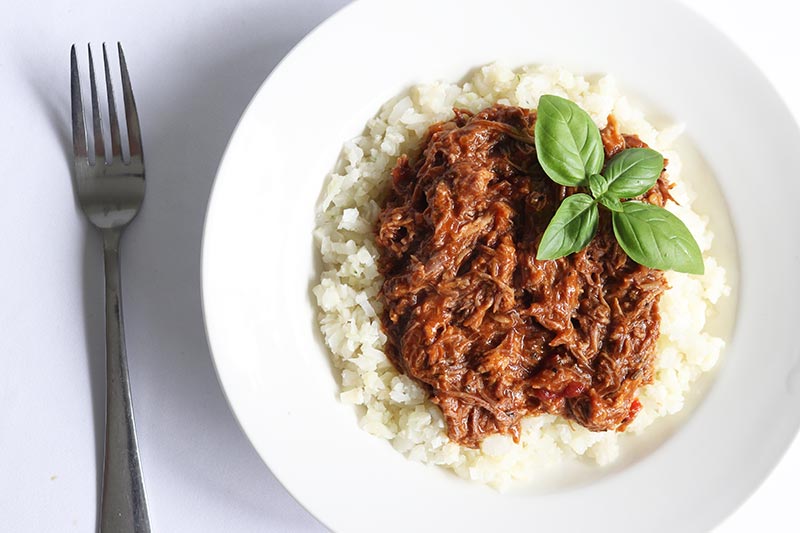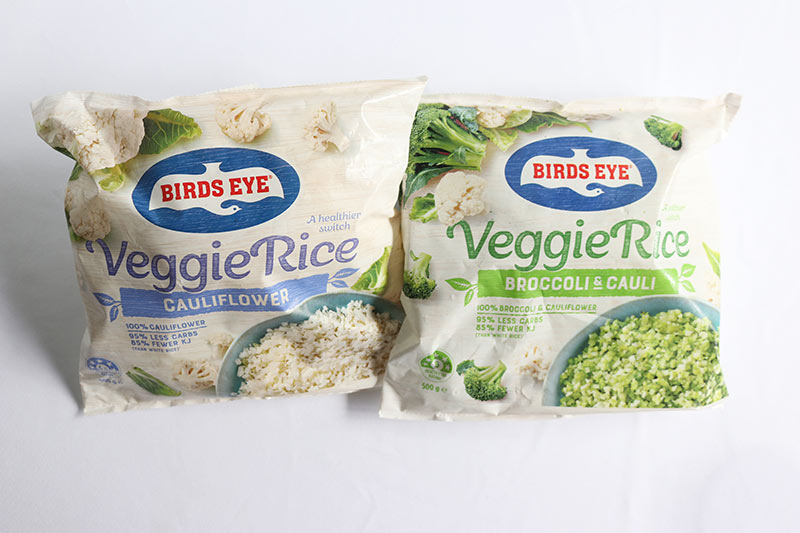Table of Contents[Hide][Show]
Rice is a popular meal base used in Asian cuisine, stir fries, or to soak up a saucy meal. But you may be wondering is rice good for diabetics? Or what is the best rice for diabetics to eat?
Let’s look closer at the facts.
Rice Nutrition Facts
Macronutrients
Here’s what you’ll find in half a cup of white rice:
- Kilojoules/Calories: 430/102.7
- Carbohydrates: 22g
- Protein: 2.1g
- Fat: 0.2g
- Fibre: 0.3g
Unfortunately, rice is full of carbs, carbs, and more carbs!
In fact, there really isn’t anything else to a serving of rice besides carbs, and unfortunately rice is low in fibre too.
Here’s a chart of more options:

Contrary to popular belief, brown rice doesn’t fair much better. As you can see in the chart above, brown rice does contain a little more fibre (1.6-1.8g of fibre per half cup), but that’s not going to overpower the effects of the 21+g of carbohydrates!
Micronutrients in Rice
Of all the types of rice, white rice is the least nutritious. Not only has it been stripped of a lot of it’s fibre during processing, but most of the vitamins and minerals naturally found in rice are also lost in that process.
A cup of white rice contains:
- 5% of your daily vitamin B-6 needs
- 4% magnesium
- 1% calcium
- 1% iron
A cup of brown rice contains:
- 15% vitamin B-6
- 21% magnesium
- 2% calcium
- 4% iron
A more efficient way to get these micronutrient is by indulging in lower carb nutrient dense foods such as a variety of fresh veggies, hearty meats, and full-fat dairy products.
The Glycemic Index of Rice
The GI of rice can range widely.
- Basmati 52-84
- Brown rice 65-87
- White rice 43-92
Overall, since all varieties of rice are low in fibre and higher in carbs, rice of any kind may still be detrimental to your blood sugar stability and we recommend rice is best avoided or greatly minimised.
Best Type of Rice To Eat
As you can see in the chart above, wild rice has the fewest carbs and the most protein of the rices. Although if you are going to eat it, it would still be better to limit your serving to 1/4 cup, which would be 8g carbs, 0.7g fibre.
The best kind of “rice” for blood sugar control isn’t actually rice at all…it’s a vegetable-based low carb rice substitute.
Swap white rice for cauliflower rice and you’ll instantly cut your carbs by 30+ grams!

You can purchase many veggie ‘rices’ at the supermarket. For example, both Coles and Woolworths have veggie rice in the fresh and frozen section of the store.

These can be substituted into most rice-based dishes seamlessly. Often times you won’t notice too much of a difference, since rice tends to take on the flavours around it.

It’s easy to make your own fresh veggie rice too! Just throw broccoli or cauliflower into a food processor until well chopped.

Quick Questions about Rice and Diabetes
Is brown rice good for diabetics?
Brown rice is a high carbohydrate food. A half cup contains 21-24 grams of carbohydrates and only a small amount of fibre 1.6-1.8g. For this reason, brown rice is not really a good food option for diabetics.
Can diabetics eat white rice?
White rice is a high carbohydrate food ranging from 22-29 grams carbohydrates per half cup. This is a lot of carbohydrate considering we recommend no more than 25 grams of carbs per meal.
Is basmati rice ok for diabetes type 2?
Like all other rice, basmati rice is also a high carb food. A half cup contains 20.2 grams of carbohydrates and only a small amount of fibre 0.5g. Carbohydrates are the nutrient that has the greatest influence on blood sugar and HbA1c levels, so it is often best to avoid rice or greatly minimise your intake.
What about red rice for diabetes?
Red rice is extremely high in carbohydrate with half a cup being about 59 grams of carbs and 3.6 grams of fibre. Not a good rice choice for diabetes.
Is black rice a better option?
While black rice can be a good source of a few micronutrients, it also packs a huge punch in terms of carbs. half a cup of black rice contains about 70g of carbs…your blood sugar will not be happy!
Is long grain rice ok for diabetics?
Long grain rice is more favourable to cook with as it doesn’t stick to the inside of the pot, and although it technically contains less starch than short grain rice, both kinds have almost identical carb counts.
Long grain brown rice is 25.8 grams carbs; medium grain is 22.9 grams carbs – not much difference.
Long grain white rice is 22.3 grams carbs; short grain is 29.4 grams carbs – again, overall not a huge difference.
Recommendation of Rice for People with Diabetes
We encourage people with type 2 diabetes and prediabetes to avoid or greatly minimise rice intake.
There are many other lower carb nutrient dense foods to choose that are much friendlier for blood sugar and HbA1c levels.
BUT, if you are going to eat rice, keep it to around 1/4 cup per serve. Plus, there is a way to improve the nutrition quality of rice with less impact on blood glucose response.
Cook it, then cool it for at least 24 hours, then reheat it to eat it!
What’s so good about this method?
This cooking and cooling process increases the resistant starch in the rice, which leads to less of an impact on blood sugar spike after consuming the rice. It may not mitigate the entire effect of the carbohydrate load of rice, but can help reduce the impact.

